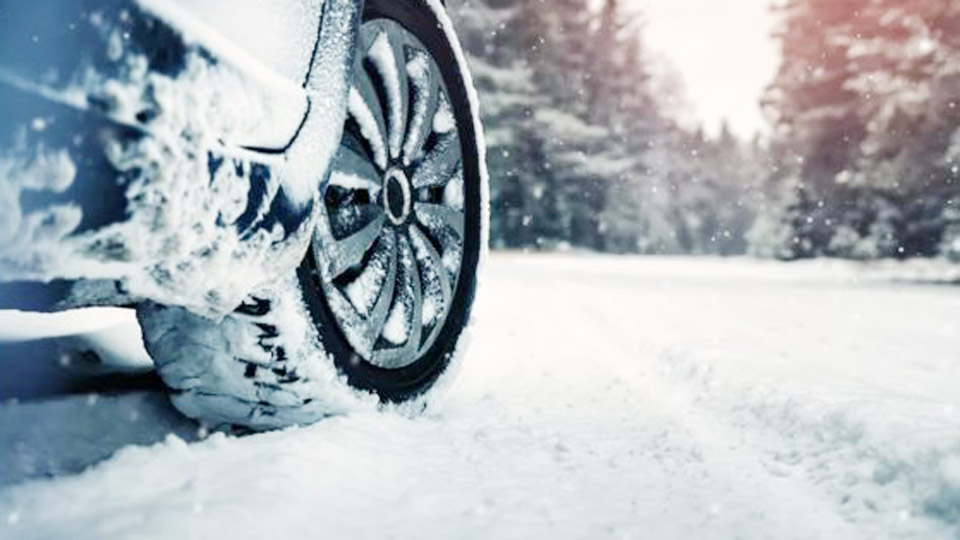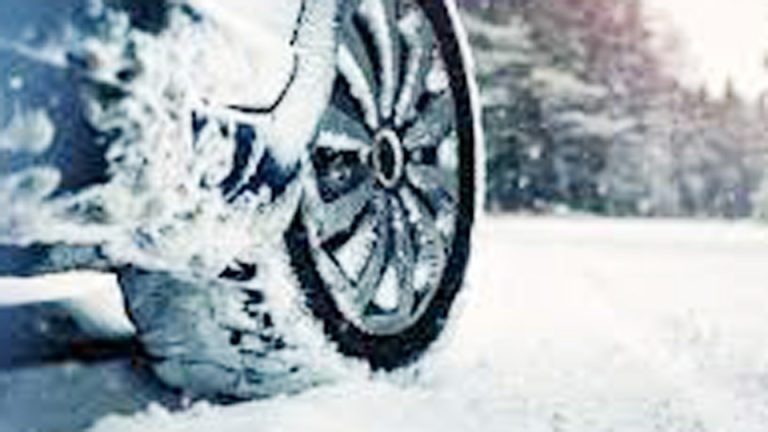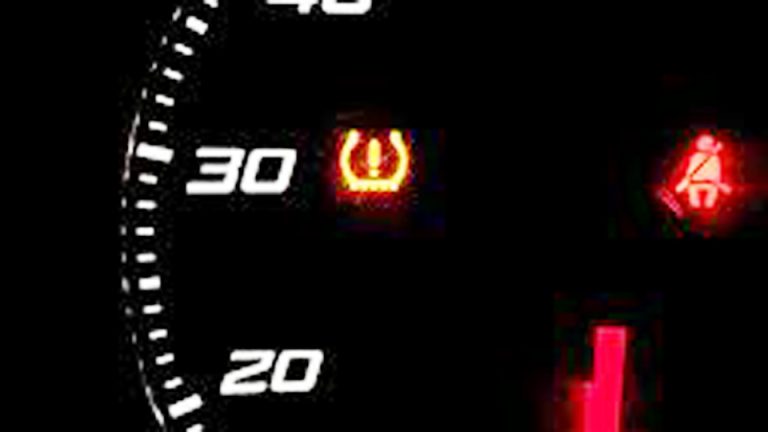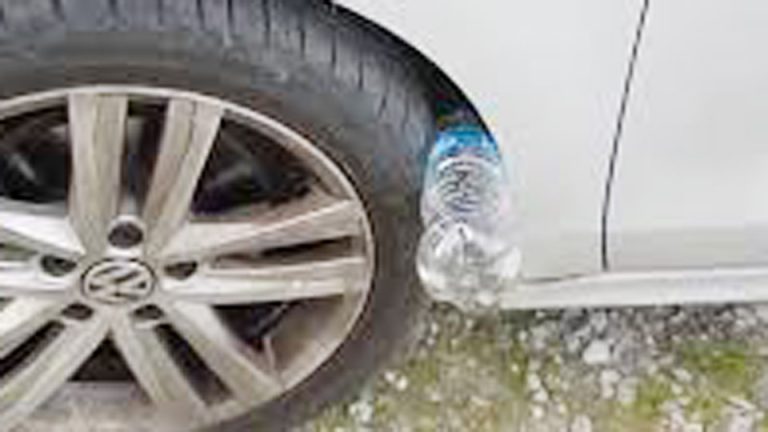“Is a Front Wheel Drive SUV Good in the Snow?” Last winter, I was driving my front-wheel-drive Honda CR-V through a snowy backroad when I hit a patch of ice. My heart raced as I gripped the wheel, wondering, Is a front-wheel-drive SUV good in the snow? The car held steady, thanks to some careful driving and good tires, but it got me thinking about how well these vehicles really handle winter conditions.
If you’re eyeing a front-wheel-drive SUV and live in a snowy part of the U.S., you’re probably asking the same question. Let’s figure this out together, like we’re chatting over coffee in my garage.
I’ve driven front-wheel-drive SUVs through Michigan winters, helped friends get unstuck, and even compared them to all-wheel-drive models. From blizzards to icy hills, I’ve seen what these vehicles can—and can’t—do.

Image by ktla
This guide dives into my experiences, practical tips, and clear answers to help you decide if a front-wheel-drive SUV is up to the task for snowy driving. Whether you’re a daily commuter or an occasional adventurer, I’ll break it down so you can drive with confidence.
Front-Wheel Drive in SUVs – Is a Front Wheel Drive SUV Good in the Snow?
Front-wheel-drive (FWD) SUVs send power to the front wheels only, unlike all-wheel-drive (AWD) or four-wheel-drive (4WD) systems that power all four wheels. This setup “pulls” the vehicle forward, which can feel more stable than rear-wheel drive, which “pushes.” My CR-V, for example, feels planted when starting from a stop on snowy roads, as the front wheels grip while the engine’s weight sits over them.
FWD SUVs are common in compact and midsize models like the Honda CR-V, Toyota RAV4, and Ford Escape. They’re often cheaper, lighter, and more fuel-efficient than AWD versions, which is why I chose my CR-V. But snow changes the game, and I’ve learned that FWD has strengths and limitations in winter. Let’s look at how these SUVs perform in snow and what makes them work—or not.
How Front-Wheel-Drive SUVs Handle Snow
Driving my CR-V through snowy Michigan winters has taught me a lot about FWD performance. Here’s what I’ve found, based on real-world driving and helping friends with their SUVs.
Strengths of Front-Wheel Drive in Snow
FWD SUVs can be surprisingly capable in snow, especially with the right setup. The front wheels pull the vehicle, which helps maintain control on slippery surfaces. I noticed this when navigating an icy hill in my CR-V—the front wheels gripped better than a friend’s rear-wheel-drive sedan, which fishtailed. The engine’s weight over the front wheels adds traction, making it easier to start moving in light snow.
Modern FWD SUVs also come with traction control systems that brake slipping wheels to redirect power. My CR-V’s traction control kicked in during a snowstorm, helping me climb a driveway without spinning out. With good tires, FWD SUVs can handle light to moderate snow—think 2-4 inches—on plowed roads or flat terrain.
Limitations in Deep Snow or Ice
FWD struggles in deep snow or on steep, icy hills. Last winter, I got stuck in about 6 inches of unplowed snow in a parking lot. The front wheels spun, and without power to the rear, I needed a push to get free. AWD would’ve helped by sending power to all wheels. Ice is another challenge—FWD doesn’t improve braking or cornering, so I had to drive slowly and anticipate stops.
If you live in areas with heavy snowfall or frequent ice, like Buffalo or Minneapolis, FWD alone might not cut it. I’ve seen AWD Subarus breeze through conditions where my CR-V struggled, but there are ways to make FWD work better, which I’ll cover later.
Factors That Affect FWD SUV Performance in Snow
Not all FWD SUVs perform the same in winter. From tires to driving habits, here’s what I’ve learned makes a difference.
Winter Tires Are a Game-Changer
Tires matter more than the drivetrain. I swapped my CR-V’s all-season tires for winter tires (Bridgestone Blizzaks), and it was like driving a different car. Winter tires have deeper treads and softer rubber that grip snow and ice better.
In a 2016 Consumer Reports test, a FWD SUV with winter tires outperformed an AWD SUV with all-season tires in snow. My CR-V now handles 4-6 inches of snow with confidence, as long as I drive carefully.
Ground Clearance Matters
FWD SUVs typically have 7-8 inches of ground clearance, enough for light snow but not deep drifts. My CR-V’s 7.8 inches cleared plowed roads fine, but in deeper snow, I felt the undercarriage scrape. Compare that to an AWD Subaru Forester with 8.7 inches, which sails through deeper snow. Check your SUV’s clearance in the owner’s manual if you expect heavy snow.
Traction Control and Stability Systems
Modern FWD SUVs have traction control and stability systems that help in snow. My CR-V’s traction control reduces wheel spin by braking individual wheels, while stability control keeps the car on track during turns. These systems aren’t foolproof, though—I still had to feather the throttle on icy hills to avoid wheel spin.
Your Driving Style
How you drive matters as much as the car. I learned to accelerate gently, brake early, and steer smoothly to keep my CR-V stable. Once, I tried powering up a snowy hill too fast, and the wheels spun. Slowing down and using second gear (as my manual transmission allows) got me up without issue. Patience is key with FWD in snow.
Comparing FWD, AWD, and 4WD in Snow
To understand if a front-wheel-drive SUV is good in snow, it helps to compare it to AWD and 4WD. Here’s a table based on my experience and observations:
| Drivetrain | Snow Performance | Pros | Cons |
|---|---|---|---|
| Front-Wheel Drive | Good for light to moderate snow with winter tires | Affordable, fuel-efficient, stable on ice | Struggles in deep snow or steep icy hills |
| All-Wheel Drive | Excellent for most snow and ice conditions | Better traction, automatic power distribution | More expensive, lower fuel economy |
| Four-Wheel Drive | Best for deep snow and off-road conditions | Maximum traction, low-range gearing | Costly, complex, less efficient |
I’ve driven an AWD Subaru Outback in heavy snow, and it felt unstoppable compared to my CR-V. But for my daily commute on plowed roads, FWD with winter tires gets the job done without the extra cost of AWD.
Tips for Driving a Front-Wheel-Drive SUV in Snow
I’ve picked up a few tricks over the years to make my CR-V handle snow better. Here’s what works for me.
Invest in Winter Tires
Winter tires are non-negotiable for snowy climates. I spent about $600 on a set for my CR-V, and they’ve paid off in safer driving and fewer stuck moments. Look for tires with the three-peak mountain snowflake symbol—they’re designed for severe snow.
Use Snow Mode if Available
Some FWD SUVs, like certain Ford Escapes, have a snow mode that adjusts throttle response to reduce wheel spin. My CR-V doesn’t have this, but I mimic it by starting in second gear on my manual transmission, which prevents aggressive wheel spin.
Rock the Car to Get Unstuck
If you’re stuck, try “rocking” the car. I did this in my CR-V by gently shifting between drive and reverse to build momentum. It got me out of a snowbank without needing a tow. Turn off traction control temporarily to allow some wheel spin.
Keep Extra Weight in the Back
Adding weight over the rear wheels can improve traction. I keep a couple of sandbags in my CR-V’s cargo area during winter. They helped me climb a snowy driveway last year by keeping the rear planted.
Brake and Accelerate Gently
Sudden moves cause skids. I learned to brake early and accelerate slowly on icy roads. Once, I braked too hard, and my CR-V slid a few feet. Smooth inputs keep you in control.
When FWD SUVs Struggle and What to Do
FWD SUVs aren’t perfect in every winter scenario. Here’s when I’ve seen them struggle and how to handle it.
Deep Snow (6+ Inches)
In deep snow, FWD SUVs can get stuck, as I did in that parking lot. If you expect heavy snow, consider an AWD model or carry a shovel and traction mats. I keep a folding shovel in my CR-V for emergencies.
Steep Icy Hills
Icy hills are tough for FWD. My CR-V struggled on a steep, icy road until I used second gear and kept steady momentum. If hills are common, AWD or 4WD is better, or plan alternate routes.
Black Ice
Black ice is dangerous for any vehicle. I hit a patch once and felt my CR-V slide despite winter tires. Slow down, keep a safe distance, and avoid sudden steering to stay safe.
Choosing a Front-Wheel-Drive SUV for Snow
Not all FWD SUVs are equal in winter. Based on my experience and research, here are key features to look for.
High Ground Clearance
Aim for at least 7.5 inches of ground clearance. My CR-V’s 7.8 inches is decent, but models like the Toyota RAV4 (8.4 inches) do better in deeper snow.
Advanced Safety Features
Look for traction control, stability control, and ABS. My CR-V’s safety suite, including lane-keeping assist, helps on slippery roads. Models like the Honda CR-V and Mazda CX-5 often include these as standard.
Winter-Friendly Features
Heated seats, mirrors, and wipers make winter driving easier. My CR-V’s heated seats keep me comfortable, while heated mirrors prevent ice buildup. Check for these in trims like the RAV4 XLE or Ford Escape SEL.
My Experience with Popular FWD SUVs in Snow
I’ve driven or ridden in several FWD SUVs during winter, and here’s how they stack up:
- Honda CR-V: Reliable with winter tires, good for light snow, struggles in deep drifts.
- Toyota RAV4: Slightly higher clearance (8.4 inches) makes it better for moderate snow.
- Ford Escape: Snow mode and responsive handling help, but needs winter tires for ice.
- Mazda CX-5: Agile and stable, performs well with winter tires on plowed roads.
Each has strengths, but winter tires and careful driving are key to making them shine in snow.
When to Consider AWD or 4WD Instead
If you live in a region with heavy snow (like the Upper Midwest or Northeast) or frequently drive unplowed roads, AWD or 4WD might be worth the extra cost. My friend’s AWD Subaru Forester handled a blizzard better than my CR-V, especially in deep snow.
AWD adds about $1,500-$3,000 to the price but offers peace of mind. 4WD, like in a Jeep Grand Cherokee, is ideal for off-road or extreme conditions but sacrifices fuel economy.
Can a Front-Wheel-Drive SUV Handle Snow?
So, is a front-wheel-drive SUV good in the snow? From my winters driving a Honda CR-V, I’d say yes—for light to moderate snow, with the right setup. Winter tires, careful driving, and features like traction control make FWD SUVs capable for most urban or suburban winter driving.
They’re affordable, efficient, and stable on icy roads, but they can struggle in deep snow or on steep, icy hills. If you live in a snowy region like me, investing in winter tires and learning winter driving techniques can make your FWD SUV a reliable winter companion.
Don’t let snow keep you off the road. Check your SUV’s features, get those winter tires, and practice smooth driving. You’ll be ready to tackle winter with confidence, whether you’re commuting or heading to the slopes. Grab a warm drink, bundle up, and hit the road knowing you’ve got this!
Common Questions About Front-Wheel-Drive SUVs in Snow
Can a front-wheel-drive SUV handle snowy roads?
Yes, with winter tires and careful driving, FWD SUVs can manage light to moderate snow well, especially on plowed roads.
Are winter tires necessary for a FWD SUV in snow?
Winter tires greatly improve traction and safety in snow and ice, making them essential for reliable winter driving.
How does FWD compare to AWD in snowy conditions?
FWD is stable and affordable but struggles in deep snow. AWD offers better traction in heavy snow but costs more.
What features help a FWD SUV perform better in snow?
Look for winter tires, traction control, stability control, and higher ground clearance (7.5+ inches) for better snow performance.
Can I drive a FWD SUV on icy hills?
FWD SUVs can handle gentle icy hills with winter tires, but steep hills may require AWD or 4WD for better traction.
What should I do if my FWD SUV gets stuck in snow?
Try rocking the car between drive and reverse, use traction mats or a shovel, and add weight to the rear for better grip.




